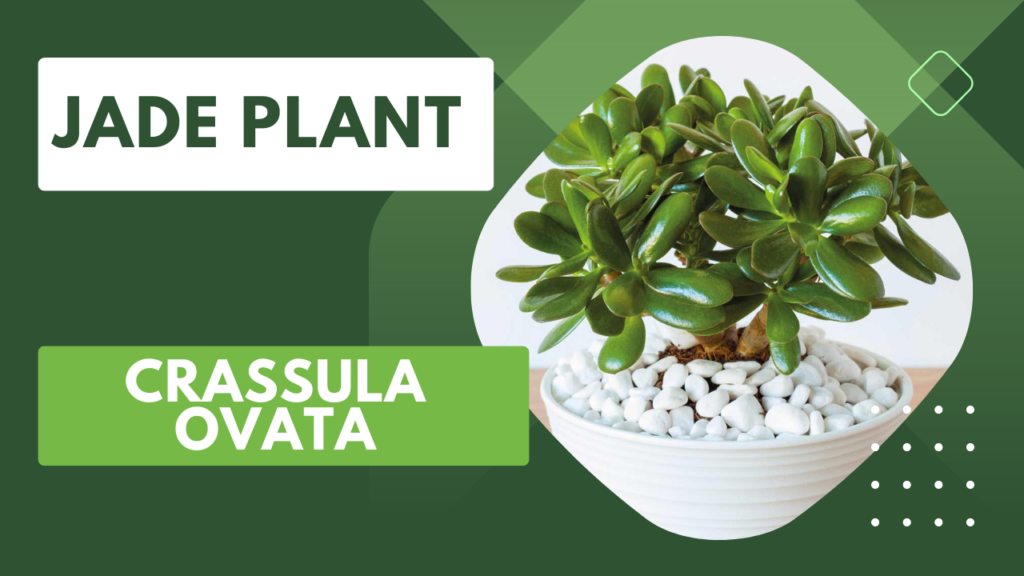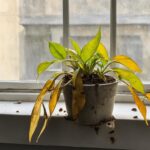Jade Plant or Crassula ovata Grow and Care tips, Sunlight Location, Maintaining Soil and Potting, Signs of Overwatering or Underwatering, Propagation, Rooting Pruning, Pests and Diseases, treatment
Welcome to my comprehensive guide on jade plant growth and care. If you’re looking for tips on how to successfully grow and care for your crassula ovata, you’ve come to the right place. As an experienced gardener and plant enthusiast, I’ve accumulated years of knowledge on jade plants and am excited to share my expertise with you.
Throughout this guide, I will provide you with all the information you need to ensure your jade plant stays healthy and vibrant. From choosing the right location and soil to watering techniques and pest control, I’ve got you covered. Whether you’re a new plant parent or a seasoned pro, this guide will provide you with valuable information on jade plant care.

Key Points of Jade Plant Grow and Care:
- Jade plants are also known as crassula ovata
- Proper location and soil are vital for jade plant growth
- Watering techniques must strike the right balance
- Propagating jade plants is an exciting way to expand your collection
- Pruning promotes healthy growth and maintains shape
Choosing the Right Location for Jade Plant
Before you start caring for your jade plant, it’s important to choose the right location where it will thrive. As succulent plants, jade plants require a lot of sunlight to grow properly.
Sunlight Requirements for Jade Plant
Place your jade plant in a location that receives at least four hours of direct sunlight daily. South or west-facing windows are ideal, as they provide the most sunlight exposure. If your home doesn’t have a lot of natural light, you can supplement it with artificial light, such as fluorescent bulbs.
On the other hand, be careful not to place your jade plant in direct sunlight for an extended period of time. This can cause the leaves to scorch or dry out. It’s also important to note that jade plants can tolerate some shade, but they won’t grow as quickly or as vibrantly.
| Sunlight Exposure | Effect on Jade Plant |
| Direct Sunlight | Can cause scorching or drying of leaves |
| Indirect Sunlight | Ideal for growth and health |
| Low Light | Will grow slower and possibly leggy, but can still survive |
Remember to rotate your plant every few weeks to ensure even exposure to sunlight and encourage symmetrical growth.
By following these sunlight requirements, you’ll be well on your way to growing a healthy and vibrant jade plant.
Soil and Potting for Jade Plants
Choosing the right soil and potting technique is crucial for the healthy growth of your jade plant. The best soil type for jade plants is a well-draining mixture that allows water to flow through easily, preventing root rot. You can create a suitable soil mix for your jade plant by combining equal parts of succulent soil, perlite, and coarse sand.
It’s essential to select the right pot size for your jade plant. A pot that is too big may hold too much moisture, causing root rot, while a pot that is too small may stunt the plant’s growth. When repotting, choose a pot that is only slightly larger than the current one, allowing room for the roots to grow.
You can also read the Guide for Choosing the Right Plant Pot
Repotting Jade Plants
Repotting a jade plant should only be done when necessary, typically every two to three years. Signs that it may be time to repot include roots growing out of the drainage holes or the plant appearing top-heavy.
When repotting, gently remove the jade plant from its current pot, being careful not to damage the roots. Shake off any excess soil and examine the roots for any signs of damage or disease. If any roots are damaged or dead, trim them back with clean scissors. Place the plant in the new pot with fresh soil, gently patting down the soil to ensure it’s level. Avoid watering the plant for a few days to allow the roots to heal and adjust to their new surroundings.
Maintaining Soil Moisture for Jade Plants
It’s important to maintain proper moisture levels in the soil for your jade plant. Water your plant deeply, allowing the excess water to drain out of the pot’s bottom. Wait until the soil dries out completely before watering again. Overwatering can lead to root rot, so be cautious not to water too frequently.
Avoid getting water on the leaves and stems of the plant, as this can cause rot and disease. Instead, water the soil directly at the base of the plant. In arid climates or during periods of dry indoor air, you can increase the plant’s humidity by placing a tray of water near it or using a humidifier.
Watering and Moisture Needs
Watering your jade plant correctly is crucial for its growth and health. Overwatering or underwatering can harm the plant and cause root rot, so it’s important to find the right balance.
The frequency of watering depends on different factors, such as the size of the pot, the type of soil, and the amount of light the plant receives. As a general rule, water your jade plant when the top inch of soil feels dry to the touch. Make sure to water the plant thoroughly, allowing excess water to drain out of the bottom of the pot.
If you’re unsure whether your jade plant needs water, you can also check the leaves. When the plant is well-hydrated, the leaves are plump and glossy. If the leaves start to look wrinkled or droopy, it may be a sign that the plant needs more water.
Signs of Overwatering
Overwatering can be just as harmful to your jade plant as underwatering. Signs of overwatering may include:
- Yellowing leaves
- Soft, mushy stems
- Foul odor from the soil
- Signs of mold or fungus
If you notice any of these signs, act quickly to save your plant. Remove any dead or mushy stems, and let the soil dry out completely before watering again.
you can also read about Complete Guide to Watering Indoor Plants for Beginners
Signs of Underwatering
Underwatering can cause the leaves of your jade plant to dry out and turn brown or yellow. In severe cases, the plant may drop its leaves. If you notice any of these signs, water your plant immediately and consider adjusting your watering schedule to prevent future issues.
Remember that jade plants can tolerate drought conditions, but it’s always better to err on the side of underwatering than overwatering. With proper watering and care, your jade plant will flourish for years to come!
Propagating Jade Plants
One of the joys of owning a jade plant is being able to propagate it. Propagation is the process of creating a new plant from an existing one, and it’s relatively easy to do with jade plants. There are a few different methods you can use:
- Stem cuttings: take a cutting of the stem that is at least 2-3 inches long. Remove the leaves from the bottom 2 inches. Let the cut end dry for a day or two before sticking it in the soil.
- Leaf cuttings: remove a leaf from the plant and let it dry for a day or two. Plant it in soil with the cut end buried and the flat side facing up.
- Division: if your jade plant has developed multiple stems, you can carefully remove them and plant them in their own pots.
Propagation can be a fun way to share your love of jade plants with others! Once you’ve taken your cutting or division, it’s important to provide the right environment for root growth.
Rooting your cuttings
How to encourage rooting will vary depending on the method you choose:
- Stem cuttings: keep the soil moist but not too wet, and provide bright, indirect light. Roots should start to grow in about a month or so.
- Leaf cuttings: be patient! It can take several months for a leaf cutting to grow roots. Keep the soil moist and provide bright, indirect light.
- Division: replant each stem in its own pot with fresh potting soil. Keep the soil moist and provide bright, indirect light.
Nurturing your new plants
Once your cuttings or divisions have rooted, it’s time to care for them as you would any other jade plant. Ensure they have the right amount of sunlight, water them correctly, and provide the right temperatures and humidity levels. It can take some time for the new plants to grow to the size of the parent plant, but with patience and care, they can thrive just as successfully!
Pruning and Shaping Your Jade Plant
Pruning is an essential aspect of jade plant care, as it helps to maintain its shape and promote healthy growth. But, before you dive into pruning, it’s essential to understand when and how to do it correctly.
When to Prune Your Jade Plant
Spring and summer are the ideal times to prune your jade plant. During this time, the plant is in its active growth phase, and pruning will stimulate new growth. Avoid pruning during the winter months as the plant is dormant and won’t recover as quickly.
How to Prune Your Jade Plant
To prune your jade plant, start by sterilizing your pruning tools to prevent the spread of diseases. Cut the stem just above a leaf or node using sharp, clean scissors or pruning shears. Always cut at a 45-degree angle to prevent water from pooling on the cut surface.
When working with small jade plants, you can use your fingertips to pinch off unwanted growth. Pinching encourages branching and helps maintain the plant’s compact shape.
Shaping Your Jade Plant
If you want to control the size and shape of your jade plant, shaping is the way to go. The best time to shape the plant is during the early growth stages when it’s flexible and more responsive to shaping.
You can shape your jade plant by using wires or weights to bend the branches in the desired direction. However, be gentle when shaping your jade plant as it can easily break or snap.
Common Mistakes to Avoid When Pruning Your Jade Plant
Over-pruning is a common mistake that many jade plant owners make. It’s essential to only remove the necessary branches and leaves and not to overdo it. Over-pruning can harm your plant and stunt its growth.
Another mistake to avoid is removing too much of the plant at once. By removing too much, you can shock the plant and cause it to struggle in recovery. Instead, aim to prune your jade plant gradually over time.
| Pruning Benefits | Pruning Tips |
| Stimulates growth | Always use clean, sharp tools |
| Maintains plant shape | Avoid over-pruning or removing too much at once |
| Prevents disease | Prune gradually over time |
Pruning and shaping your jade plant can be an enjoyable experience and rewarding for the health and appearance of the plant. Keep these tips and methods in mind, and your plant will thrive for years to come.
Common Pests and Diseases of Jade Plants
As much as we try to keep our jade plants healthy, they can still fall victim to common pests and diseases. Knowing how to identify and treat these issues is essential for maintaining your plant’s health and vibrancy.
Jade Plant Pests and their remedies
Mealybugs and spider mites are the most common pests that may affect your jade plant. Mealybugs look like small cotton balls and tend to gather at the base of the leaves and on new growth. Spider mites, on the other hand, are tiny and difficult to see, but their webbing is often a giveaway.
If you notice these pests on your jade plant, take action immediately. You can use a combination of rubbing alcohol and water to wipe down the affected areas or introduce beneficial insects like ladybugs or lacewings to help control the infestation.
You can also read about How to Get Rid of House Plant Flies (Fungus Gnats) Effectively
Jade Plant Diseases and Treatment
Leaf drop and root rot are two of the most common diseases that can affect jade plants. Leaf drop is often caused by overwatering or underwatering, while root rot is the result of waterlogged soil.
To prevent leaf drop, make sure you are watering your jade plant properly and that it is not sitting in water. If your plant has already experienced leaf drop, simply remove the affected leaves and adjust your watering habits accordingly.
If you suspect root rot, carefully remove the plant from the soil and examine the roots. If they are brown, soft, and smelly, this indicates root rot. Cut away the affected roots and repot the plant in fresh soil with proper drainage to prevent future issues.
By staying vigilant and taking appropriate action, you can prevent and treat common pests and diseases of jade plants. Your plant will thank you for the extra care and attention!
Enhancing Jade Plant Health and Appearance
Aside from the essential care practices discussed earlier, there are additional tips that can help enhance the health and appearance of your jade plant. Here are some of my favorite jade plant care tips:
- Provide Proper Nutrition: Jade plants require nutrients to grow and thrive. You can use a balanced fertilizer during the growing season to provide essential macronutrients and micronutrients. Be sure to dilute the fertilizer to half the recommended strength to avoid over-fertilizing, which can cause burning of the roots and leaves.
- Deal with Leaf Drop: It’s not uncommon for jade plants to develop yellow or dry leaves that eventually drop off. This can happen due to a lack of moisture, extreme temperatures, poor soil quality, or pests. If you notice leaf drop, remove the affected leaves and assess the cause to prevent further damage.
- Control Temperature and Humidity: Jade plants thrive in moderate temperatures between 65°F to 75°F, with humidity levels between 30-50%. Avoid exposing your jade plant to extreme temperatures or sudden temperature drops, as it can lead to shock and damage to the plant.
- Clean Leaves Regularly: Dust and dirt can accumulate on the leaves of your jade plant, blocking their pores and hindering photosynthesis. Clean your plant’s leaves with a damp cloth or a gentle shower to remove debris and improve air circulation. This is an effective way to prevent pests like spider mites from infesting your plant.
By following these care tips, you can ensure your jade plant remains healthy, vibrant, and beautiful for years to come. Remember to keep an eye on your plant, provide regular care, and enjoy the joy and beauty it adds to your home.
Final Thoughts on Jade Plant Grow and Care
As a jade plant enthusiast, I hope this comprehensive guide has provided you with valuable insights into growing and caring for your own crassula ovata. Remember that while jade plants are resilient, they still need proper care and attention to thrive.
Whether you’re a seasoned plant parent or a beginner, following the tips and techniques outlined in this guide will help you foster a healthy and beautiful jade plant. Stay vigilant in monitoring your plant’s sunlight, soil, watering, and pest control needs to ensure optimal growth and health.
Jade plants are fascinating and adaptable plants that can bring a touch of nature into any home. By investing time and effort into your jade plant, you’ll be rewarded with a stunning and long-lasting addition to your indoor garden.
Taking Your Jade Plant Care to the Next Level
Remember that caring for a jade plant is a continuous learning process, and there’s always room to grow and improve. By staying curious and engaged, you’ll be able to develop a deep and fulfilling relationship with your jade plant and the wider world of indoor gardening.
So, are you ready to begin your journey into jade plant growth and care? Start exploring, experimenting, and enjoying the wonders of this beautiful and fascinating plant today!
FAQ
How often should I water my jade plant?
Jade plants prefer to be watered thoroughly but infrequently. Allow the soil to dry out completely between waterings, and then water until the excess drains out of the pot. In general, watering every 2-3 weeks should be sufficient, but adjust according to your specific plant’s needs and environmental conditions.
Can I grow a jade plant in low-light conditions?
While jade plants can tolerate lower light conditions, they thrive best in bright, indirect light. Place your jade plant near a window that receives plenty of sunlight, but avoid direct sunlight as it can scorch the leaves. If you have limited light, consider supplementing with artificial grow lights to ensure adequate light for healthy growth.
How do I propagate my jade plant?
Jade plants can be easily propagated through stem or leaf cuttings. For stem cuttings, select a healthy stem and remove a few inches. Let the cutting dry for a few days, then plant it in a well-draining soil mix. Leaf cuttings can also be taken by removing a mature leaf and placing it on top of the soil. Keep the cuttings in a warm and bright location, misting the soil occasionally, and roots should develop within a few weeks.
My jade plant has yellowing leaves, what could be the cause?
Yellowing leaves on a jade plant can be caused by several factors, including overwatering, underwatering, excessive sunlight, or nutrient deficiencies. Assess your watering practices and adjust accordingly, ensuring the soil is dry before watering again. Place your plant in a location with indirect sunlight and fertilize it quarterly with a balanced houseplant fertilizer to provide the necessary nutrients.
How do I control the size of my jade plant?
If your jade plant is becoming too large or unruly, you can prune it to control its size and shape. Pruning should be done in spring or early summer. Simply trim back the branches or stems to your desired length, making clean cuts just above a leaf node. Keep in mind that jade plants have a tendency to grow back vigorously, so regular pruning may be necessary to maintain the desired size.




